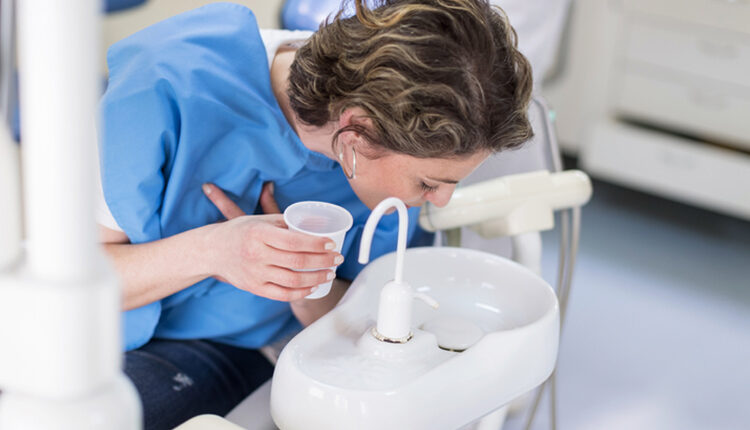 zoranm / +
zoranm / +
Infections From Dental Waterlines Prompt Federal Health Advisory
Recent outbreaks of nontuberculous Mycobacteria (NTM) infections highlight the importance of maintaining and monitoring dental unit waterlines (DUWLs) in accordance with recommended infection prevention practices. Following a cluster of suspected NTM infections after procedures at a pediatric dental clinic, the United States Centers for Disease Control and Prevention (CDC) issued a Health Alert Network Health Advisory to emphasize the critical need to follow established DUWL maintenance protocols. Dental teams should be familiar with these recommendations to ensure treatment water is safe for patient care.
After being notified of the cluster in March 2022, the CDC’s preliminary site visit showed that DUWLs contained microbial counts much higher than recommended levels. Investigation into this cluster is currently ongoing. While rare, there have been multiple documented cases of disease transmission from DUWLs, which are prone to pathogenic biofilm formation.1–6 Disease-causing microorganisms found in untreated DUWLs can include Legionella, Pseudomonas aeruginosa and NTM.
Due to the potential to form biofilm, the CDC recommends that all DUWLs be treated regularly with disinfectants to meet regulatory standards for drinking water (≤ 500 colony forming units/mL of heterotrophic water bacteria).7 Water quality must also be monitored routinely to ensure that water used in dental procedures meets safety standards.6 During surgical procedures that expose normally sterile areas of the oral cavity—such as extractions and periodontal or implant surgeries—practitioners should use only sterile solutions as a coolant or irrigant.
While the following is not an all-inclusive list, additional recommendations from the CDC include:
- Discharging water and air for a minimum of 20 to 30 seconds after each patient from any device connected to the DUWL system that enters the patient’s mouth (eg, handpieces, ultrasonic scalers and air/water syringes).6
- Reviewing the US Food and Drug Administration’s web page on DUWLs for practice guidelines.8
- Ensuring the dental facility has an infection prevention plan that includes policies and standard operating procedures for maintaining and monitoring water quality.9
- Providing staff training on properly maintaining and monitoring dental water quality. Training should be based on the manufacturer’s instructions for use of the products and devices. Instruction should be provided for all new hires, whenever new equipment is purchased, and at least annually for dental team members.9
- Documenting all maintenance records, and monitoring results and employee training. Records should be maintained according to state and federal requirements.9
- Reporting any infections suspected to be associated with dental care to the appropriate public health authorities.
Ultimately, the provision of safe care depends on oral health professionals’ adherence to established guidelines covering all facets of infection prevention—including DUWL systems.
REFERENCES
- Singh J, O’Donnell K, Nieves DJ, et al. Invasive Mycobacterium abscessusoutbreak at a pediatric dental clinic. Open Forum Infect Dis. 2021;8:ofab165.
- Hatzenbuehler LA, Tobin-D’Angelo M, Drenzek C, et al. Pediatric dental clinic-associated outbreak of Mycobacterium abscessus J Pediatric Infect Dis Soc. 2017;6:e116–e122.
- Pérez-Alfonzo R, Poleo Brito LE, Vergara MS, et al. Odontogenic cutaneous sinus tracts due to infection with nontuberculous Mycobacteria: a report of three cases. BMC Infect Dis. 2020;20:295.
- Bar T, Mishal J, Lewkowicz A, Nahlieli O. Osteomyelitis of the mandible due to Mycobacterium abscessus: a case report. J Oral Maxillofac Surg. 2005;63:841–844.
- Ricci ML, Fontana S, Pinci F, et al. Pneumonia associated with a dental unit waterline. 2012;379:684.
- Kohn WG, Collins AS, Cleveland JL, et al. U.S. Centers for Disease Control and Prevention. Guidelines for infection control in dental health-care settings — 2003. MMWR Recomm Rep. 2003;52(RR-17):1–61.
- United States Environmental Protection Agency. National Primary Drinking Water Regulations. Available at: https://www.epa.gov/sites/default/files/2016-06/documents/npwdr_complete_table.pdf. Accessed November 2, 2022.
- United States Food and Drug Administration. Dental Unit Waterlines. Available at: https://www.fda.gov/medical-devices/dental-devices/dental-unit-waterlines. Accessed November 2, 2022.
- United States Centers for Disease Control and Prevention. Summary of Infection Prevention Practices in Dental Settings: Basic Expectations for Safe Care. Available at: https://www.cdc.gov/oralhealth/infectioncontrol/pdf/safe-care2.pdf. Accessed November 2, 2022.

